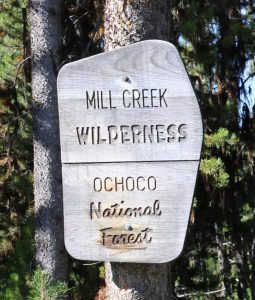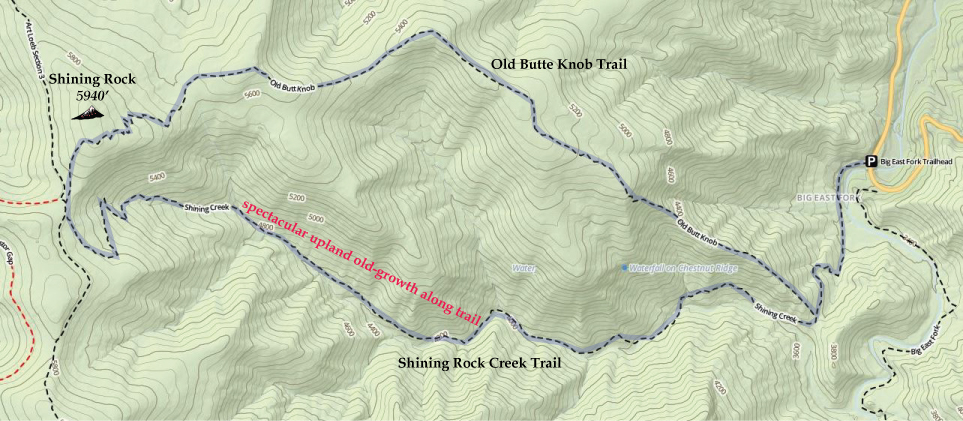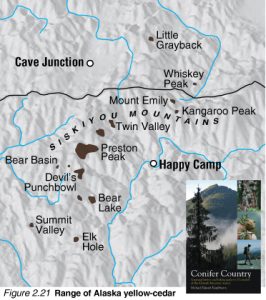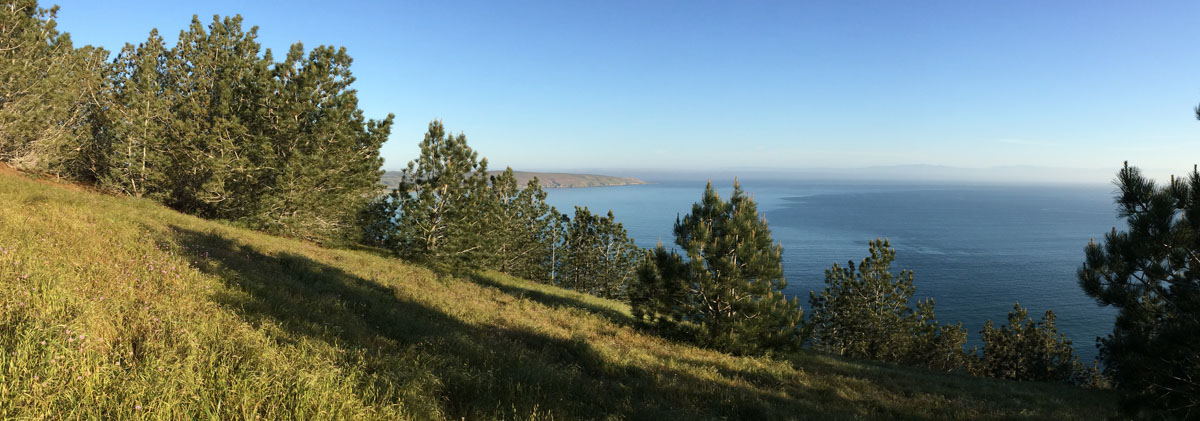 The main event has been on the calendar for the past eight years. I have heard stories from friends who have actually traveled around the world to see the phenomenon–and from that alone I knew if there was and eclipse practically in our backyard, we needed to go. We selected a spot in the heart of the Ochoco National Forest and literally on the edge of the Mill Creek Wilderness in a meadow complex. The Mill Creek Wilderness Twin Pillars Trail was our hiking destination the day before the eclipse event. The wilderness protects a harsh environment typified by ancient lava flows, fire-prone conifer forests, and the Mill Creek Drainage itself. We found wonderful views across central Oregon and a fire-scared landscape on our way to the Twin Pillars. In addition, western larch (Larix occidentalis), was the conifer highlight on this adventure.
The main event has been on the calendar for the past eight years. I have heard stories from friends who have actually traveled around the world to see the phenomenon–and from that alone I knew if there was and eclipse practically in our backyard, we needed to go. We selected a spot in the heart of the Ochoco National Forest and literally on the edge of the Mill Creek Wilderness in a meadow complex. The Mill Creek Wilderness Twin Pillars Trail was our hiking destination the day before the eclipse event. The wilderness protects a harsh environment typified by ancient lava flows, fire-prone conifer forests, and the Mill Creek Drainage itself. We found wonderful views across central Oregon and a fire-scared landscape on our way to the Twin Pillars. In addition, western larch (Larix occidentalis), was the conifer highlight on this adventure.
Shining Rock Wilderness
Quick Facts: The Shining Rock Wilderness is in Haywood County, North Carolina and is 18,483 acres.

Southern Appalachian Mountain Ecology
Most botanists are familiar with the ecological similarities between the southern Appalachians and the Klamath Mountains. These two regions are the two most bio-diverse temperate regions in North America. Here is as excerpt from Conifer Country:
Yellow-cedar in the Siskiyous

I have begun a collaborative mapping and inventorying project for yellow-cedar in California this summer. The species is a CNPS Inventory of Rare and Endangered Plants on list 4.3 (limited distribution) in the state, with only a handful of known locations. The majority of the stands are on the Klamath National Forest but a few are also on the Six Rivers. Over the course of the summer I will be visiting a number of these populations and collecting data on stand health, reproduction, and plant associates. I made the first stop of the summer at the Bear Peak Botanical Area.
Santa Rosa Island Plants
This is the last of my four posts about Santa Rosa Island. It is simply a photographic tour of plants that have not yet been highlighted in previous posts including other interesting, rare, endemic, and common Santa Rosa Island plants.
- Santa Rosa Island Plant list I generated from CalFlora

Torrey Pine Forest
Santa Rosa Island Torrey pine (Pinus torreyana ssp. insularis)

The first time Santa Rosa Island landed on my plant exploring radar screen was when I learned about the Torrey pine some time in the early 2000s. I had never even seen this tree until I took a trip to Torrey Pines State Reserve north of San Diego in early 2012. It is the rarest pine in North America with several thousand “mature” trees on both the mainland and island. My bucket list for understanding the ecology of this species is complete now that I have visited the island.
As mentioned in an early post, pigs were first introduced on Santa Rosa in the mid 1800s. By 1888 it is estimated, based on historical records, that there were only 100 Torrey pines on the island. Today, all herbivorous megafauna have been removed (minus 5 sterile horses from the old ranch) and the Torrey pine are thriving–with an estimated 12,300 trees–one-quarter of which are saplings!
Researchers debate the arrival time of the Santa Rosa Torrey pine, estimating anywhere from 6,000 to over 1 million years. Disagreement also exists as to whether these two population represent subspecies or varieties of each other. Some argue the two populations are genetically different enough to be considered a subspecies, others prefer distinction at the variety level. Regardless, it is a beautiful species and well worth seeing in the wild.
